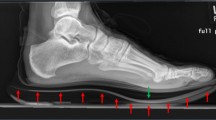Abstract
Introduction
The flexibility of cadavers conserved using Thiel’s embalming method remains unexplained. We aimed to perform microscopic comparison of muscle and tendon fibres from fresh cadavers (FC), formaldehyde-preserved cadavers (FPC) and cadavers conserved by Thiel’s method (TC).
Methods
Muscle and tendon biopsies performed on FC, FPC and TC were conditioned and stained by Masson’s trichrome, Sirius red and Ramon y Cajal, then studied under optical microscope. Alignment and integrity of the muscle and tendon fibres were studied.
Results
We observed a modification of the muscle fibres in all specimens from TC, regardless of the type of staining used. The muscle fibres taken from FC and FPC were relatively well conserved, both in terms of alignment and integrity. We did not observe any modification of collagen in either muscle or tendon fibres.
Conclusions
The considerable fragmentation of the muscle proteins, probably caused by certain corrosive chemicals, (e.g. boric acid) present in Thiel’s embalming solution, could explain the suppleness of the TC. However, we cannot exclude the possibility of alterations in tendon or muscle collagen, since the experimental methods we used, did not allow for the study of collagen ultrastructure.


Similar content being viewed by others
References
Alberty J, Filler TJ, Schmal F et al (2002) Thiel method fixed cadaver ears. A new procedure for graduate and continuing education in middle ear surgery. HNO 50(8):739–742
Benkhadra M, Faust A, Ladoire S et al (2009) Comparison of fresh and Thiel’s embalmed cadavers according to the suitability for ultrasound-guided regional anesthesia of the cervical region. Surg Radiol Anat 31(7):531–535
Benkhadra M, Lenfant F, Nemetz W et al (2008) A comparison of two emergency cricothyroidotomy kits in human cadavers. Anesth Analg 106(1):182–185
Feigl G, Anderhuber F, Schwarz G et al (2007) Training methods for regional anaesthesia. Evaluation and comparison. Anaesthesist 56(5):437–443
Holzle F, Franz EP, Lehmbrock J et al (2009) Thiel embalming technique: a valuable method for teaching oral surgery and implantology. Clin Implant Dent Relat Res (Epub ahead of print)
Peuker ET, Werkmeister R, Pera F et al (2001) Surgical procedures in mouth, jaw and facial surgery in Thiel embalmed body donors. Mund Kiefer Gesichtschir 5(2):141–143
Thiel W (1992) The preservation of the whole corpse with natural color. Ann Anat 174(3):185–195
Thiel W (1992) An arterial substance for subsequent injection during the preservation of the whole corpse. Ann Anat 174(3):197–200
Thiel W (2002) Supplement to the conservation of an entire cadaver according to W. Thiel. Ann Anat 184(3):267–269
Wolff KD, Kesting M, Mucke T et al (2008) Thiel embalming technique: a valuable method for microvascular exercise and teaching of flap raising. Microsurgery 28(4):273–278
Giger U, Fresard I, Hafliger A et al (2008) Laparoscopic training on Thiel human cadavers: a model to teach advanced laparoscopic procedures. Surg Endosc 22(4):901–906
Acknowledgments
We would like to thank Mr Romain Toussaint and Mrs Amandine Chlemaire, preparers of the Imagery Platform of IFR100, for their helpful technical support. We thank Mrs Fiona Ecarnot for translation and editorial assistance. This study was financed by the fund of the laboratory of anatomy, Medical University of Dijon, France.
Conflict of interest statement
No conflict of interest has been declared.
Author information
Authors and Affiliations
Corresponding author
Rights and permissions
About this article
Cite this article
Benkhadra, M., Bouchot, A., Gérard, J. et al. Flexibility of Thiel’s embalmed cadavers: the explanation is probably in the muscles. Surg Radiol Anat 33, 365–368 (2011). https://doi.org/10.1007/s00276-010-0703-8
Received:
Accepted:
Published:
Issue Date:
DOI: https://doi.org/10.1007/s00276-010-0703-8




